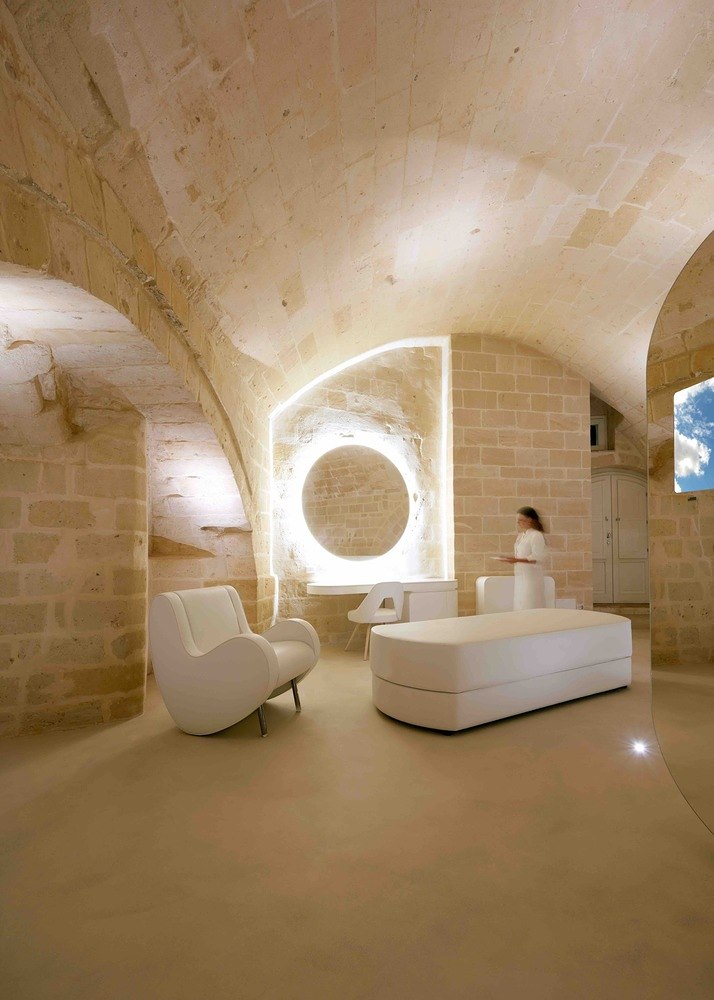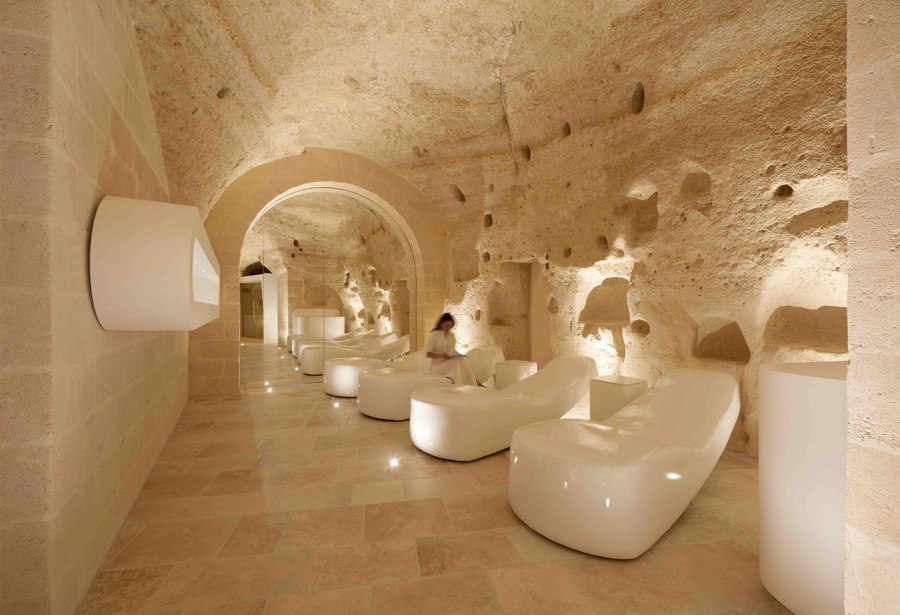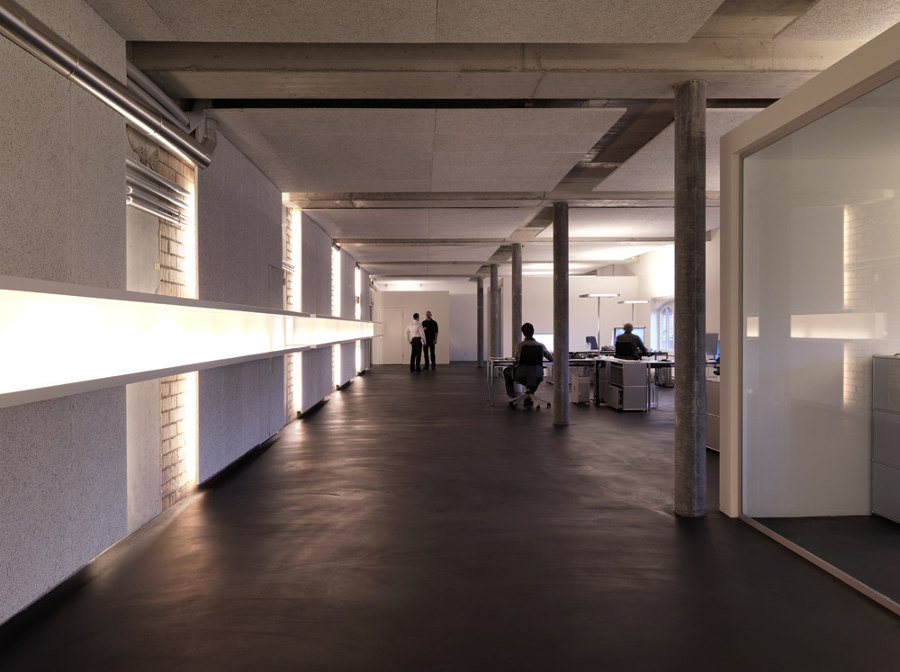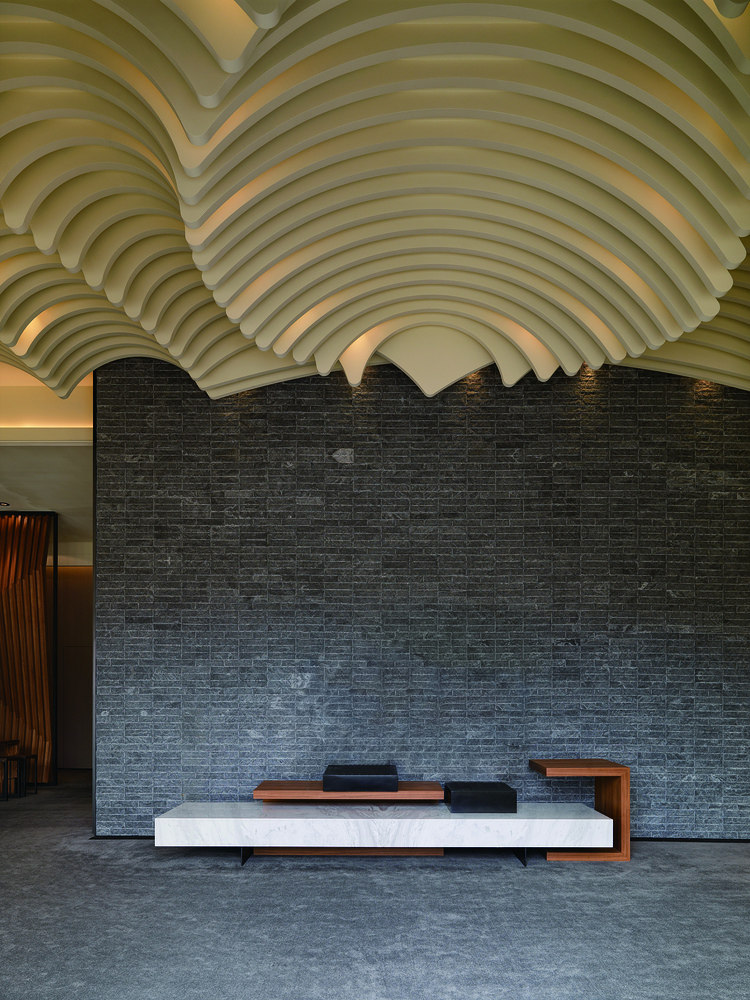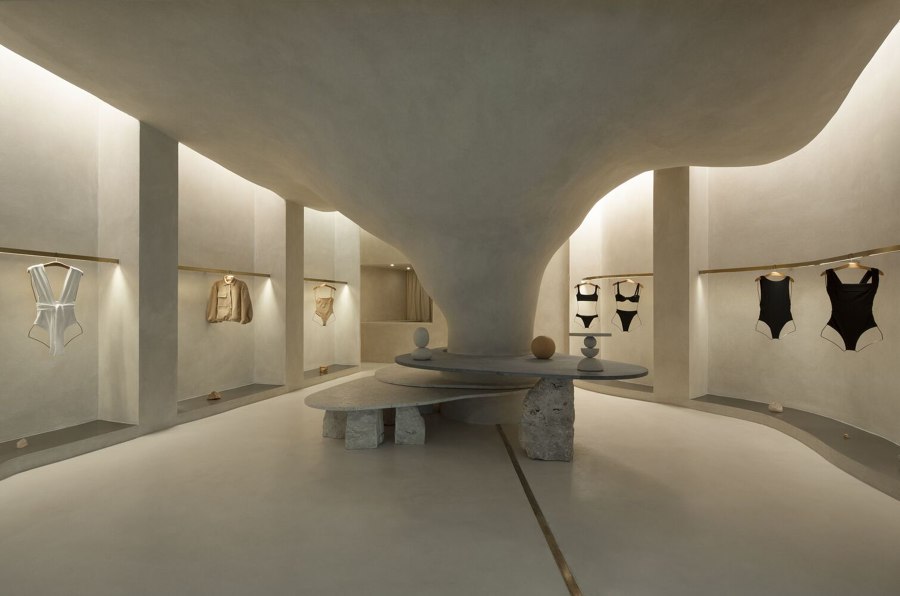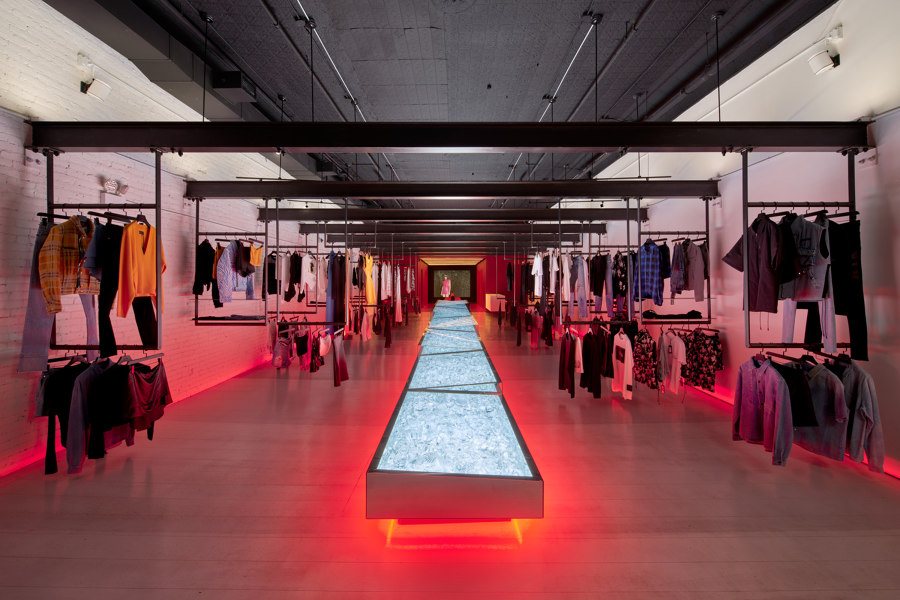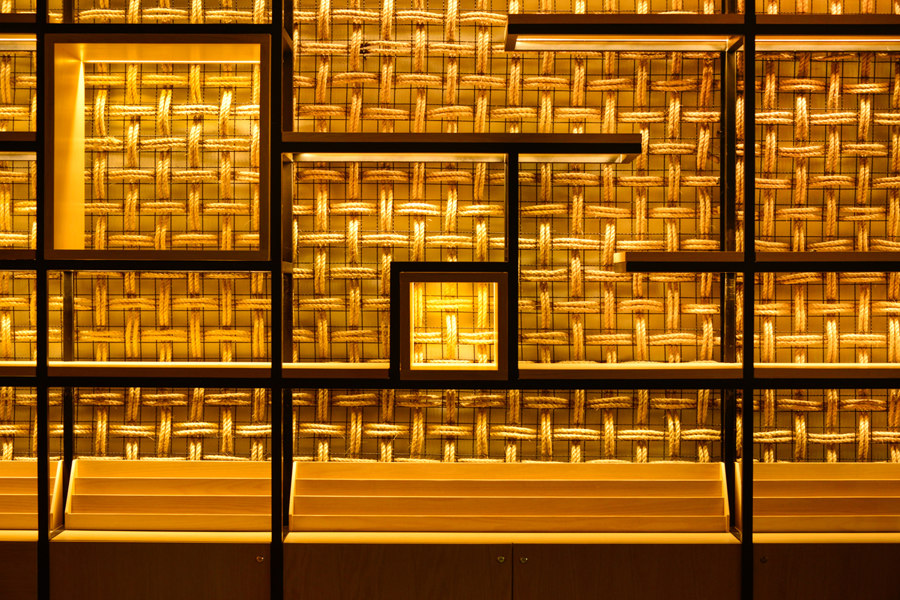Bouncing off the walls: how interiors can benefit from indirect lighting
Texte par Claire Brodka
14.04.23
We take a look at five different interior typologies to illustrate the effectiveness of clever lighting design in all kinds of spaces.
Lighting is often a numbers game — too much, and interiors literally lose their edge, too little, and the dim atmosphere can make a space seem bland. Photo: Maira Acayaba

Lighting is often a numbers game — too much, and interiors literally lose their edge, too little, and the dim atmosphere can make a space seem bland. Photo: Maira Acayaba
×The importance of lighting in interior design cannot be overstated: done right, it not only accentuates a space's architectural features, but also makes inhabitants feel at ease. As Carmelo Zappulla of Lighting Studio External Reference explains in an interview with Architonic, light is a crucial tool to add an emotional element and 'animate a space.'
At 2022's Light + Building, Architonic Editor-in-Chief Simon Keane-Cowell (right) and Carmelo Zappulla of External Reference (left) discuss the importance of light in relation to space
There are a plethora of artificial lighting options to choose from. Which works best is usually determined by the nature of the interior they're in and the desired spatial effect. One of the most common is indirect lighting. This technique uses fixtures to aim light onto surfaces that act as reflectors, softening the emitted rays to prevent pillar-like, bulky beams in favour of a more evenly distributed glow.
There are a plethora of artificial lighting options to choose from. Which works best is usually determined by the nature of the interior they're in and the desired spatial effect
Indirect lighting minimises shadows and reflected glare, making it particularly appropriate for rooms with reflective surfaces such as computers, mirrors or televisions. To illustrate the effectiveness of indirect lighting, we've rounded up examples from ArchDaily's project database across five different interior typologies that show how this form of illumination can elevate a variety of spaces beyond their four walls.
Sit down, relax. Spa and wellness interiors such as the Aquatico Cave Luxury Hotel & SPA (top and middle) or Hotel MINHO (bottom) use indirect lighting to create a sense of calm. Photos: Jürgen Eheim (top, middle) & Nelson Garrido (bottom)
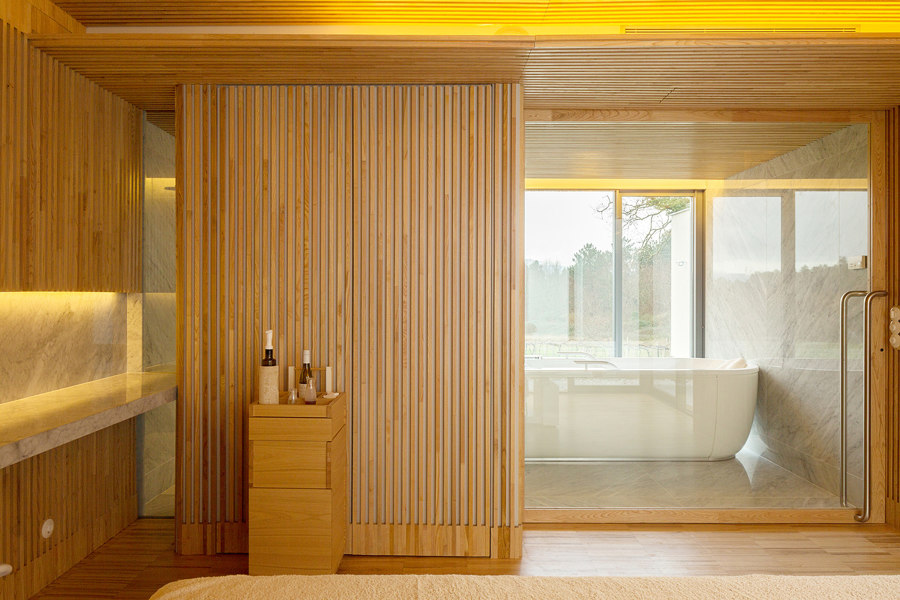
Sit down, relax. Spa and wellness interiors such as the Aquatico Cave Luxury Hotel & SPA (top and middle) or Hotel MINHO (bottom) use indirect lighting to create a sense of calm. Photos: Jürgen Eheim (top, middle) & Nelson Garrido (bottom)
×Wellness interiors
Hotel, commercial or private spa and wellness areas are some of the most common interior spaces that make use of indirect light's diffused glow. Fixtures here often take organic shapes such as circles or waves, echoing the soothing and visually appealing effect of their surroundings. One example of this is Simone Micheli's Aquatio Cave Luxury Hotel & SPA in Matera, Italy, which uses 'discrete lighting fixtures, strategically positioned to create unique scenographic effects', as explained by the architects.
Indirect light fixtures in wellness spaces often take organic shapes such as circles or waves, echoing the soothing and visually appealing effect of their surroundings
Other times, hidden LED strips are used to highlight specific architectural features such as textured walls and pools or identify and separate relaxation zones from their active counterparts. For the spa at Hotel MINHO in Portugal Vila Nova de Cerveira, for example, architects Virgula i employed wall panels 'cladded in local chestnut wood... with the right tone of light and warmth' to make its visitors feel at ease both in the pool area and individual treatment rooms.
AXII Apartment (top) uses backlit mirrors and cleverly hidden LED strips to create the right bathroom ambience, while Apartment JC II (bottom) highlights the kitchen backsplash and crown moulding. Photos: Imagen subliminal (top) & Fernando Guerro (bottom)
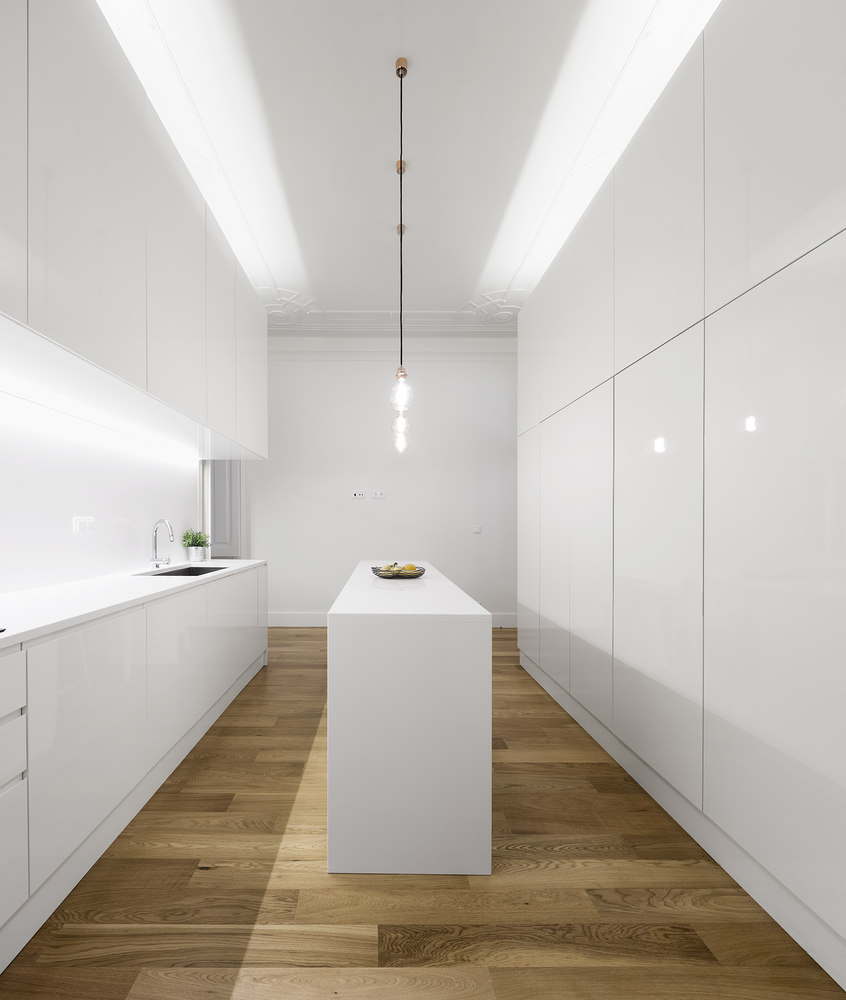
AXII Apartment (top) uses backlit mirrors and cleverly hidden LED strips to create the right bathroom ambience, while Apartment JC II (bottom) highlights the kitchen backsplash and crown moulding. Photos: Imagen subliminal (top) & Fernando Guerro (bottom)
×Residential interiors
As far as residential interiors are concerned, bathrooms and kitchens are two prominent candidates for indirect light accents due to their multitude of reflective surfaces. Similar to more public wellness areas, private bathrooms also benefit from the flattering nature of light reflected off an additional surface which creates a warm and relaxing atmosphere, not to mention an often improved mirror appearance. AXII Apartment in Madrid, Spain, by ADOM-STUDIO makes sure its inhabitants are always standing in the right light through backlit circular mirrors and hidden ceiling LED strips.
Private bathrooms and kitchens also benefit from the flattering nature of light reflected off an additional surface
In kitchens, designers can visually elevate features such as an island, backsplash or open cabinets through the purposeful use of indirect light sources. In addition to highlighting an all-white backsplash for their Apartment JC II project in Portugal, João Tiago Aguiar Arquitectos chose to draw the gaze up and underline the historic space's beautiful crown moulding.
Warmth may be the last thing we connect with contemporary workplaces, but the Young Space office (top, middle) and the Rethoric of Space lobby (bottom) prove indirect light does the trick. Photos: Bruno Helbing (top, middle) & Kyle Yu (bottom)

Warmth may be the last thing we connect with contemporary workplaces, but the Young Space office (top, middle) and the Rethoric of Space lobby (bottom) prove indirect light does the trick. Photos: Bruno Helbing (top, middle) & Kyle Yu (bottom)
×Office interiors
Places of work are arguably the most screen-dense and thus benefit just as much from indirect light sources as kitchens or bathrooms. Another quality that makes this type of lighting particularly suited to high-stress environments: its soothing emotional effect. By supplementing task lights above or on desks with indirect light sources in common areas or break rooms, employers can offer staff clearly defined zones of respite from their daily duties and increase overall well-being and happiness for higher productivity levels.
Its soothing emotional effect makes indirect lighting particularly suited to high-stress work environments
The Young Space office of an IT firm in Zurich, Switzerland, by Daniele Claudio Taddei helps its employees feel connected through a '35 m long back-lighted library' that 'gives a distinctive character to the room' and creates visual warmth. Warmth is also what Cai-In Interior Design was after for the Rhetoric of Space offices in Taipei City, China. This is achieved through a highly unusual lobby area, where 'gaps were deliberately left in the wooden walls to introduce silvers of light that complement the indirect lighting, forming a warm and serene space.'
Retail spaces such as the Haight Clothing Store (top) or RtA Soho Store (bottom) often make use of indirect light to create an inviting atmosphere and flatter customers in changing rooms. Photos: Maira Acayaba (top) & Brandon Shigeta (middle, bottom)
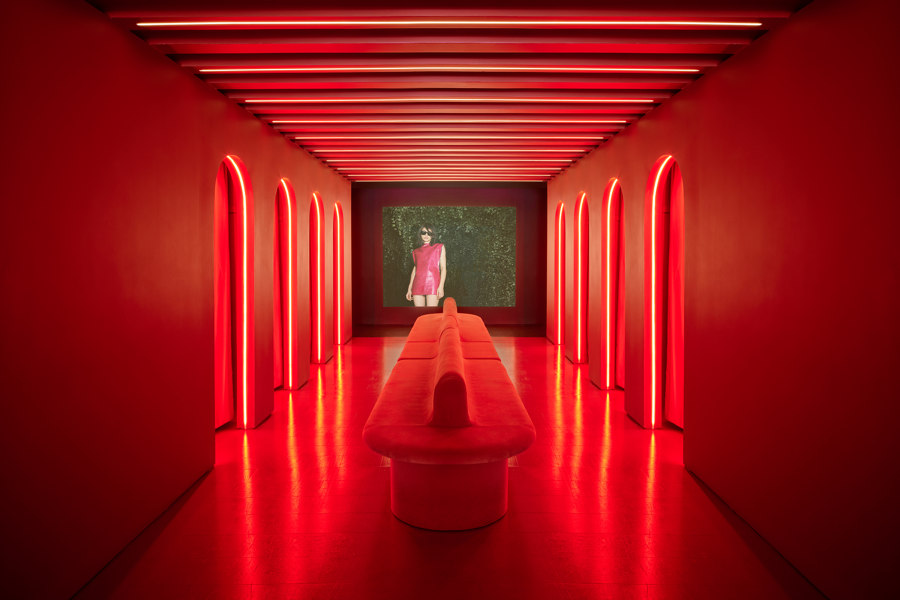
Retail spaces such as the Haight Clothing Store (top) or RtA Soho Store (bottom) often make use of indirect light to create an inviting atmosphere and flatter customers in changing rooms. Photos: Maira Acayaba (top) & Brandon Shigeta (middle, bottom)
×Retail interiors
Retail interiors also often use the soothing effect of indirect light to their advantage. By creating a warm atmosphere that invites visitors to linger, indirect lighting design such as the one at cavernous Haight Clothing Store by AIA Estúdio and Raphael Tepedino in Rio de Janeiro, Brazil, enables store staff to have more prolonged conversations with prospective clients. In addition, indirect light flatters inanimate objects just as much as our mirror images, making it a perfect double punch.
Indirect lighting design enables store staff to have more prolonged conversations with prospective clients
The merchandise at RtA's store in the popular shopping neighbourhood of SoHo, New York City, by Dan Brunn Architecture is lit up by red light strips that hover underneath an 'immense, 40’ x 3.5’ mirrored sculpture of Baccarat crystal' created by the architect, as well as along the brick walls and around the arched changing rooms, providing a tempting atmosphere to dwell in.
Mexican agave leaf rope is illuminated at Cordoba's Coffee Museum (top) and eye-catching book spines are the center of attention in the white interior of The Water Drop Library (bottom). Photos: Alan Morgado (top, middle) & Weiqi Jin (bottom)
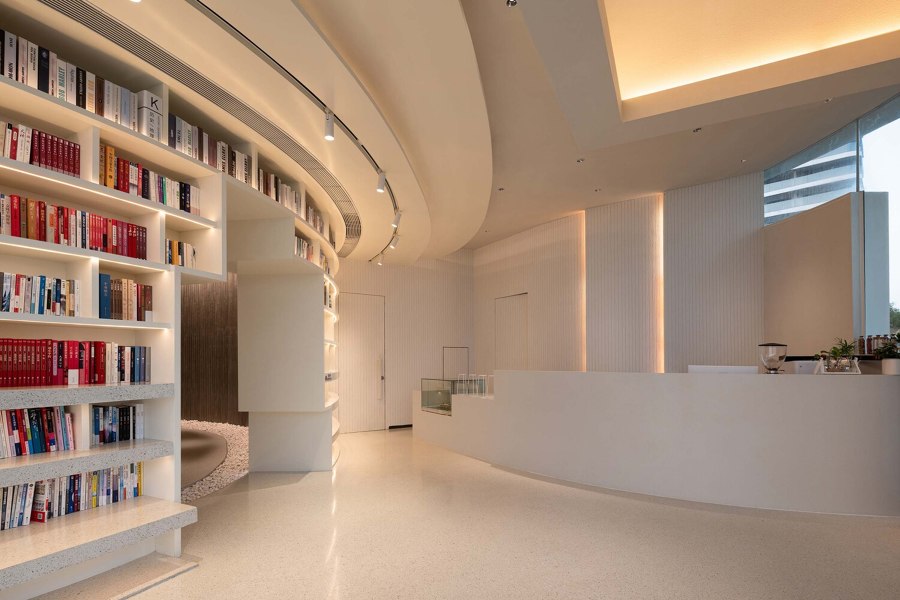
Mexican agave leaf rope is illuminated at Cordoba's Coffee Museum (top) and eye-catching book spines are the center of attention in the white interior of The Water Drop Library (bottom). Photos: Alan Morgado (top, middle) & Weiqi Jin (bottom)
×Cultural interiors
In public, cultural spaces such as museums, libraries or art galleries, indirect light is equally useful. By positioning light sources so their rays reflect off a surface onto display objects or illuminate their backgrounds, light designers can draw the viewers’ eye in a way that is more subtle than direct spotlights. The resulting effect imbues its dedicated subject with a mysterious quality ideal for underlining impactful pieces of art or old books without risking heat damage or overt tackiness.
By using indirect light sources, light designers can draw the viewers’ eye in a way that is more subtle than direct spotlights
The Water Drop Library in Huizhou, China, by 3andwich Design/He Wei Studio uses indirect light in this way to accentuate their colourful floor-to-ceiling bookshelves, which are 'arranged in a ring along the inner wall' and draw attention with their spines that stand in stark contrast to the otherwise white interiors. Mexico's Coffee Museum in Cordoba by M+DA Arquitectos uses indirect lighting to highlight the material of its gift shop display shelves: henequen, described by the architects as 'a hard fiber from the Mexican agave leaf' that 'replicates the fabric of the coffee sacks which due to its texture and color bring warmth to the space.'
© Architonic
Head to the Architonic Magazine for more insights on the latest products, trends and practices in architecture and design, or find inspiration in a whole world of projects from around the globe through ArchDaily's architecture catalogue.


